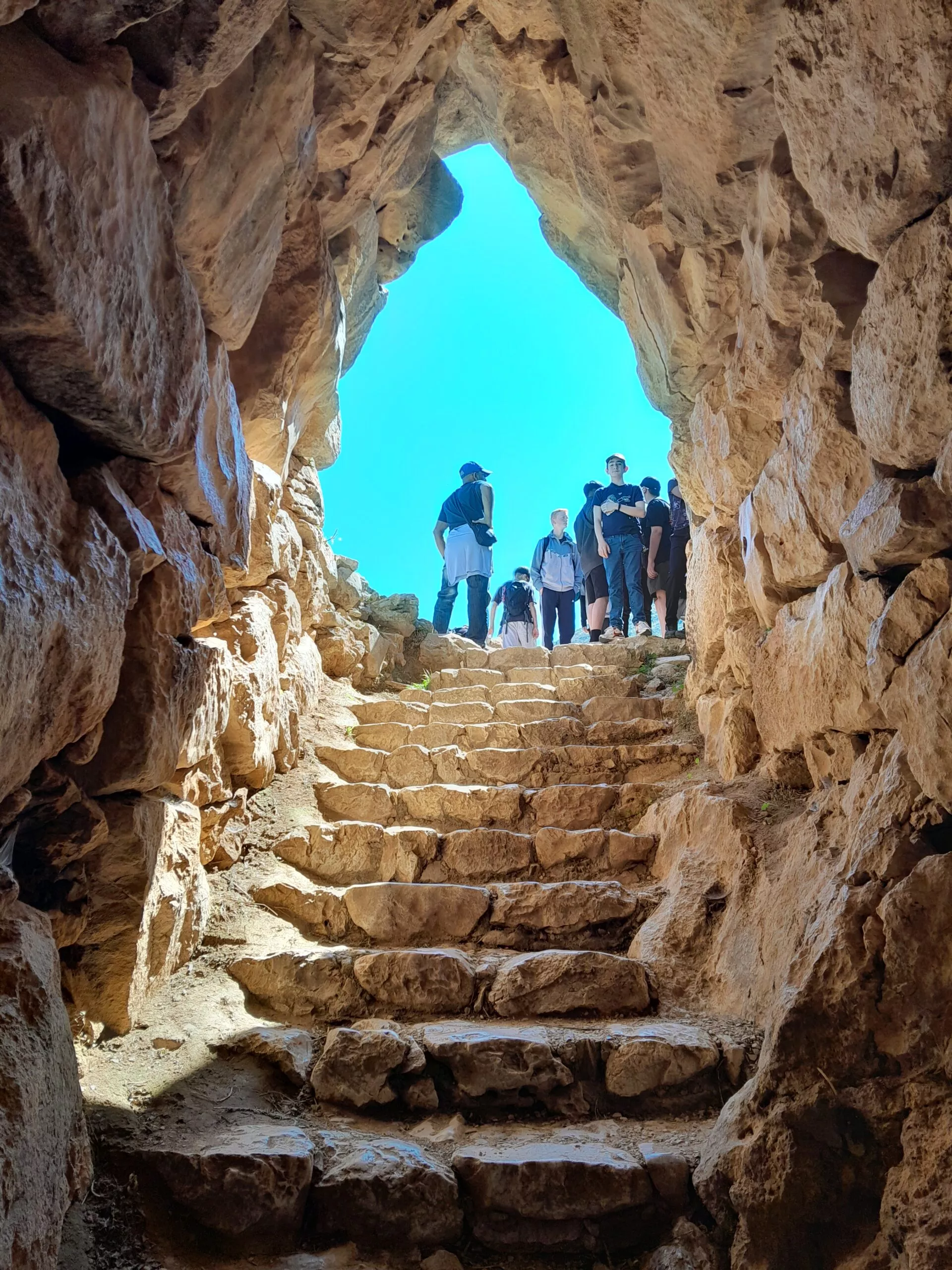

The Year 8 Greece Trip is an ambitious undertaking: a journey through the monuments of a civilization that has had unparalleled influence on the world around us, exploring the origins of epic poetry and drama, of democracy, philosophy and much more. By mid-afternoon on Monday 18 March, the Year 8s had reached Cape Sounion to survey the temple of Poseidon at the southernmost tip of Attica.
The Greeks did not believe their gods were kinder, more generous-spirited than mortals: they were to be feared and placated with burnt offerings in front of their dwellings. Evidently we had not sufficiently placated Poseidon before approaching his temple, as the credit card machine in the ticket office was not working. Happily, the temple can be observed from the nearby cafe, and Poseidon’s wrath did allow space in the trip budget for an impromptu trip to the bowling alley the next day.
On Tuesday we ascended the Acropolis to view the Parthenon, the centrepiece of Pericles’ magnificent rebuilding of an Athens recently devastated by the Persian Wars. The Parthenon is a prescribed source for GCSE Classical Civilization, and it is therefore magical to be able to explore the richness of its sculptural programme in person. A tour of the ancient Agora, the commercial centre of ancient Athens, was followed by a visit to the New Acropolis Museum, which unites the sculpture of the Parthenon with previous structures on the site. After exploring the emergence of Athens as a great power in the fifth century, and just about dodging the rain, it was a nice change of pace to head to Blanos bowling alley in Glyfada: our champion bowlers will get prizes in the End of Term assembly.
Wednesday took us to the island of Aegina, to explore the temple of Aphaia: a stunning example of fifth-century temple architecture, and another reminder both of the familiarity and strangeness of Ancient Greek beliefs. The nymph, made invisible to escape the amatory attentions of Zeus, is often identified with Athena, goddess of stratagem and jealous guardian of her own virginity. She, like Poseidon, was honoured with a temple that housed a cult statue, was tended by priestesses and played host to sacrifice and communal feasting – an important part of the social glue of the ancient polis.
Thursday’s visits first to Tiryns and then to Mycenae introduced sites a whole millennium older than Pericles’ Athens. Bronze-Age Greece was ruled over by impressive fortified cities, centering on grand palaces whose monumental architecture, frescoes, and exquisite artefacts show they were centres of craftsmanship, agriculture and far-reaching trade networks. Overlooking the megaron, the great hall of the rulers of Mycenae, we explored the connection between this place and its most famous inhabitant King Agamemnon, and the ensuing agonies of the house of Atreus. Exploring the relationship between the archaeology and texts of Homer’s Iliad and Odyssey is another key part of GCSE Classical Civilisation, and we hope a number of our boys will have been inspired to take this study further in Year 9.
Friday brought the final visit to a historical site: the healing sanctuary of Asclepius, son of Apollo. This fascinating site housed not only temples and accommodation for pilgrims seeking healing, but a running track and the most complete theatre from the ancient Greek world. After Jai G had been crowned the swiftest at our foot race, the boys headed to the theatre to get a taste of Greek tragedy in its original performance space: the tale of Oedipus, immortalised by the great tragedian Sophocles, an integral part of the A-Level Classical Civilization Course. My personal thanks go to the team of teachers for helping guide and supervise our students, and to the Year 8 boys and their parents for supporting this unforgettable educational experience.
Mr Lomberg
Head of Classics